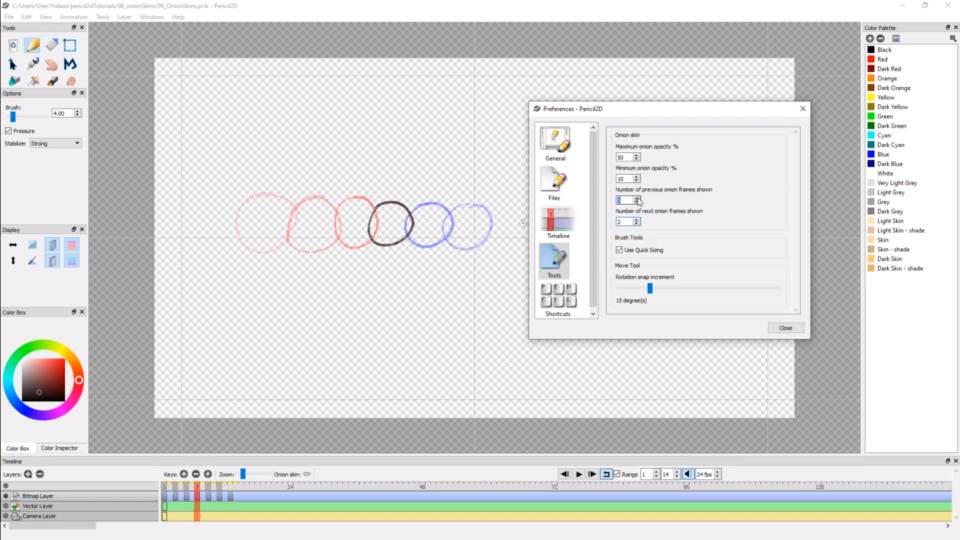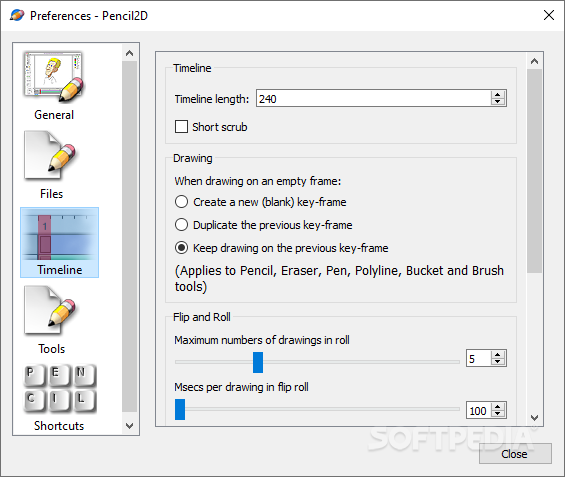

- #PENCIL 2D CAN YOU ADD A FRAME IN BETWEEN A FRAME HOW TO#
- #PENCIL 2D CAN YOU ADD A FRAME IN BETWEEN A FRAME SOFTWARE#
- #PENCIL 2D CAN YOU ADD A FRAME IN BETWEEN A FRAME CODE#
An alternative to pack is to establish a frame size explicitly by calling setSize or setBounds (which also sets the frame location).
#PENCIL 2D CAN YOU ADD A FRAME IN BETWEEN A FRAME HOW TO#
If you're not already familiar with content panes and how to add components to them, please read Adding Components to the Content Pane.įor frames that have menus, you'd typically add the menu bar to the frame here using the setJMenuBar method.
#PENCIL 2D CAN YOU ADD A FRAME IN BETWEEN A FRAME CODE#


Here is a picture of the extremely plain window created by the FrameDemo demonstration application. To make a window that appears within another window, use an internal frame. To make a window that is dependent on another window disappearing when the other window is iconified, for example use a dialog instead of frame. Applications with a GUI usually include at least one frame. JFrame class, is a window that has decorations such as a border, a title, and supports button components that close or iconify the window. Since the border area is included in the overall size of the frame, the border effectively obscures a portion of the frame, constraining the area available for rendering and/or displaying subcomponents to the rectangle which has an upper-left corner location of (insets.left, insets.top), and has a size of width - (insets.left + insets.right) by height - (insets.top + insets.bottom).Ī frame, implemented as an instance of the The dimensions of the border area may be obtained using the getInsets method. The size of the frame includes any area designated for the border. A Frame is a top-level window with a title and a border. To create a camera folder go to the hamburger menu (the three horizontal lines) on the top left corner of your Timeline Palette. This is how you can make the zoom in-zoom out effect, how you can make the camera shake like there is an explosion, or how to make it follow the characters head. This folder should contain all the elements that we want to be affected by our camera.Ĭamera folders allow you to move the camera view. To work with a camera, we must have a 2D camera folder. And to begin the great journey towards the peak of cinematography, you first need to know how to exploit the 2D camera function. You also need to adjust the speed (the length of each keyframe), the acceleration, and the form of the object (ex: the ball deforms when it moves very very fast, the face squishes when you close the mouth, the legs blur when you run etc).Īnd to make really good animation, being a good artists isn't all either.
#PENCIL 2D CAN YOU ADD A FRAME IN BETWEEN A FRAME SOFTWARE#
The software can go further than you, and basically "tween" your "in-betweens".Īnd that's pretty much all you need to know about keyframes.įor good animation, keframing is not enough.

It doesn't matter if you yourself classify the drawing on the Frame X as an "in-between". The tweening is a task of the software, done automatically. To put it simply, to ClipStudio, each of your drawings can be classified as a keyframe. The line between a "keyframe" and an "in-between" is not traced the same way as in traditional animation. In digital software, the definition of a keyframe is a bit different from the traditional definition. It's time to dig into the fun stuff - how to animate better. Take your time, and try to reproduce each step on your computer ^_^ ) You can reread the guide and watch the clips. If so far you followed the guide well, then you know the basics of animating and can now animate without an issue. In digital animation, a "cel" is basically what you see on your keyframe. A "cel" refers to that transparent sheet on which traditional animators used to draw each frame. Now you have seen a couple of times the word "cel".


 0 kommentar(er)
0 kommentar(er)
